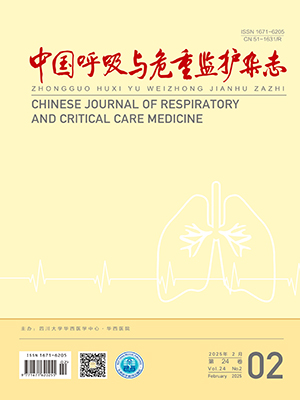0bjective To compare the effect of closed airway management system and open suction system on distribution and drug susceptibility of pathogenic bacteria in lower respiratory tract of mechanical ventilated patients.Methods Fifty-nine cases in ICU who received mechanical ventilation for more than 48 h from May 2006 to Dec 2006 were randomly divided into two groups.Group A(29 patients)received closed—tracheal suction and Group B(30 patients)received open-tracheal suction.Quantitative bacteriological culture and sensitivity of antibacterial drugs were conducted on lower respiratory tract secretion samples.Results In group A,a total of 91 strains were isolated,in which a single pathogen infection(41.4%)was the most frequent,followed by mixed infection of two pathogens(34.5%)and three or more pathogens(24.1%).In group B,a total of 141 strains were isolated,in which three or more pathogen infection(53.33%)was the most frequent,followed by two pathogen infection(30%)and a single pathogen infection(16.7% ).Pathogen distribution between the two groups was not significantly different(P gt;0.05).Drug susceptibility test did not show significant difference in main pathogens between the two groups(P gt;0.05).Conclusions Closed airway management system can reduce the infection or colonization of mixed pathogens,but can not change the distribution and drug susceptibility of pathogens.
Citation: LIU Ning ,LIU Jianying,GU Qin. Efects of closed airway management on distribution and drug susceptibility of pathogenic bacteria in lower respiratory tract of mechanical ventilated patients. Chinese Journal of Respiratory and Critical Care Medicine, 2008, 08(6): 427-430. doi: Copy
Copyright © the editorial department of Chinese Journal of Respiratory and Critical Care Medicine of West China Medical Publisher. All rights reserved
-
Previous Article
A Survey on the Human Resource Allocation of Chengdu Rural/Community Health Service Organizations: A Pre-Survey Report of Three Circles, Seven Rural Hospitals/ Centers and Six Village Health Situations (Part Ⅱ) -
Next Article
Medical Residents in the Department of Internal Medicine at a Tertiary Hospital: a Survey of the Personnel Allocation and Their Workloads




